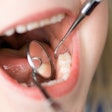Dental care costs are estimated to increase nearly $46 billion over five years due to the removal of fluoride from public water systems, with California, Florida, and Texas seeing the highest total costs, according to a research brief from the ADA Health Policy Institute (HPI).
The states estimated to have the lowest total costs over that same period were Hawaii, Vermont, and Alaska, according to the brief.
“Removing fluoride from community water systems -- especially if combined with a ban on fluoride supplements -- would not only deal a major blow to the nation’s oral health, but would also entail major economic costs,” wrote co-author Deesha Bhaumik, PhD, a senior health policy analyst at HPI.
Recently, community water fluoridation in the U.S. has been under intense scrutiny.
In May, the U.S. Food and Drug Administration announced that it is taking steps to remove concentrated ingestible fluoride prescription drops and tablets for infants and toddlers from the market following a safety review and public comment.
The U.S. Department of Health and Human Services Secretary Robert F. Kennedy Jr. has promised to recommend ending water fluoridation since before President Donald Trump was elected to a second term. Kennedy has claimed that the cavity-fighter fluoride is an "industrial waste associated with arthritis, bone fractures, bone cancer, IQ loss, neurodevelopmental disorders, and thyroid disease."
During a July hearing about fluoride supplements, Dr. George Tidmarsh, PhD, director of the U.S. Center for Drug Evaluation and Research, didn’t seem sold on their benefits, noting that supplements have never undergone the careful FDA process of determining whether the benefits outweigh the risks.
Some states, like Utah and Florida, have already passed legislation preventing fluoride from being added to community water systems.
To assess the financial effects, the researchers estimated the cost of removing fluoride from public water systems based on a recently published cost-effectiveness analysis of children ages 0 to 19 in the U.S. who no longer had access to fluoridated water. That analysis estimated that removing fluoride will result in a spike of $9.8 billion in spending on dental exams, treatment for caries, abscesses, tooth extractions, and more for children. The cost estimate from that data was used to calculate the per-capita costs for this age group receiving fluoridated water, which was $190.
To calculate the dental expenditure ratio between children and adults, 2022 data from the Medical Expenditure Panel Survey (MEPS) were analyzed. By limiting the analysis to those who visited a dentist in the past year, average dental spending for children and adults was calculated for all payers.
Due to the removal of fluoride from public water systems, the total five-year increase in dental care costs was estimated to be $45.9 billion. Of that total, the estimated costs were $9.8 billion for children, $27.9 billion for working-age adults, and $8.2 billion for seniors, the authors wrote.
The states with the highest total costs were California at $4.8 billion, Texas at $4.4 billion, and Florida at $3.4 billion. On the flip side, the states with the lowest total costs were Hawaii at $26 million, Alaska at $50.4 million, and Vermont $49.4 million, they wrote.
“Fluoride water and supplement bans would leave all communities, but especially rural and low-income communities, vulnerable to tooth decay and its associated complications,” Bhaumik and colleagues wrote.




















